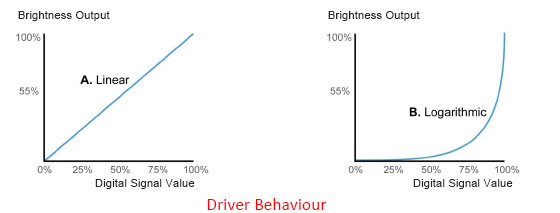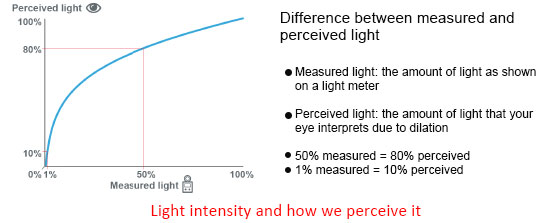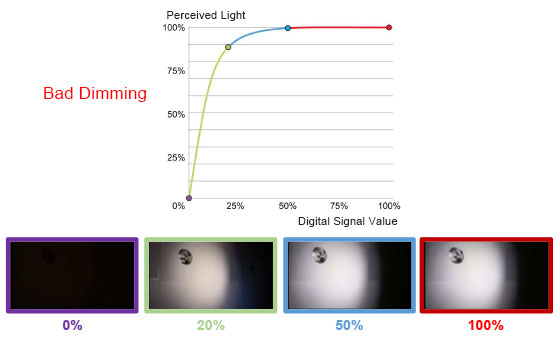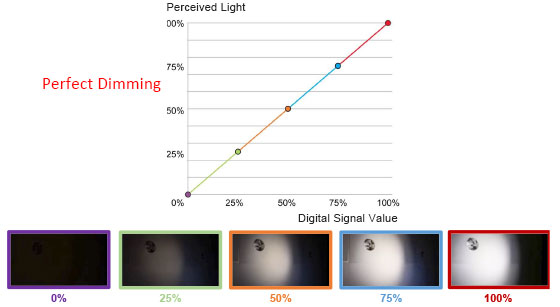Often, the LED lighting system consists of a (wall) dimmer or controller, a driver and a luminaire. To dim the light, you move the slider or turn the wheel and the dimmer sends a signal to the driver. The driver translates that signal to an electrical current that powers the LED.
In linear dimming curves of LED drivers, the brightness output is linear in relation to the digital signal value which is translated by the driver. For instance, if the digital signal value is at 25%, the brightness output is at 25%- see A.
However, in logarithmic dimming curves, the digital signal value changes slower at deeper dimming levels and faster at the brighter end-see figure B.
If the system is not configured properly, the dimming performance can be unsatisfactory. In figure 4, the difference in light output is quite large. And at the bright end on the right, the difference is barely noticeable. The whole dimming effect is not good.
The light level changes evenly with the dimmer position. The result of a much better implementation of a lighting system is shown in figure 5.
To achieve perfect dimming performance, the brightness of the LED must be matched to the way our eyes behave. With a linear dimmer, a logarithmic dimming curve should be used in the driver.
(Image & Video Source: Euchips)


















